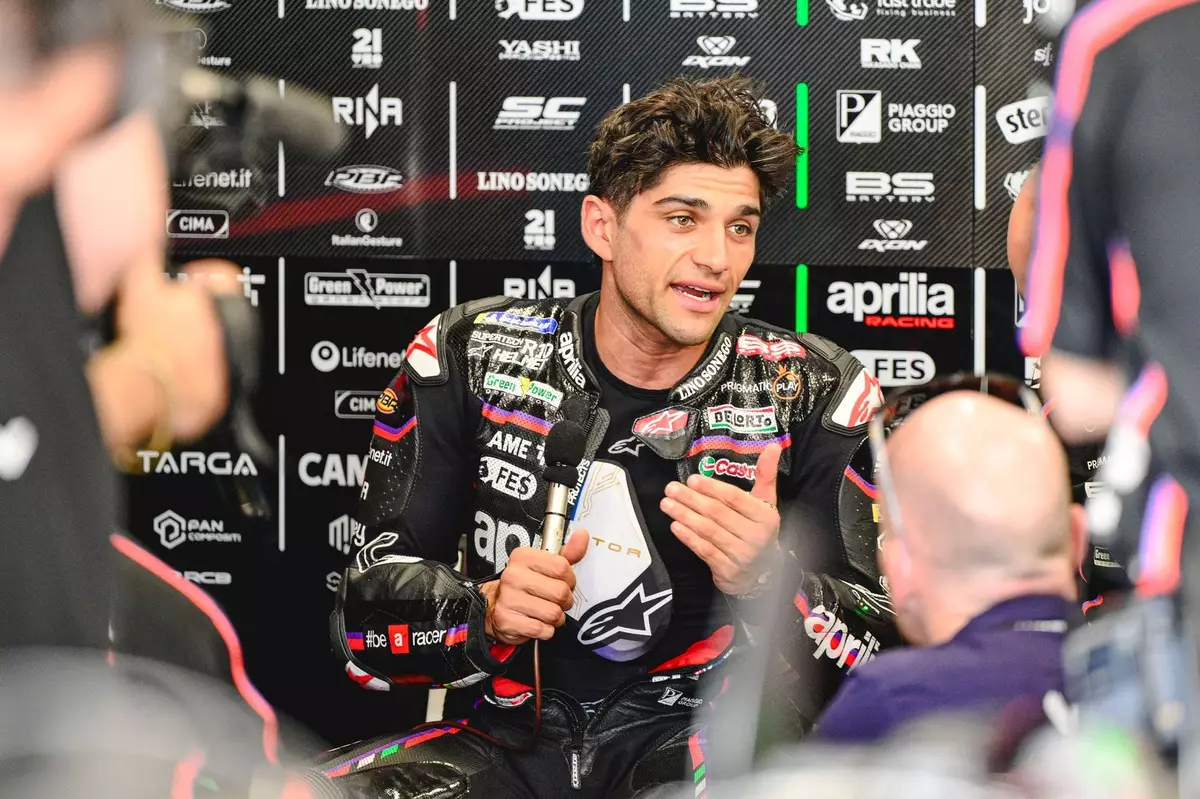The world of MotoGP has always been shrouded in a mix of fierce competition and political maneuvering. The recent revelations surrounding Jorge Martin and his contract with Aprilia have sent shockwaves through the paddock, marking a period of discontent underlined by legal implications and mounting pressure. As the MotoGP landscape shifts constantly, this scenario serves as a valuable case study in the complexities of rider contracts and team dynamics.
Jorge Martin’s declaration of intent to terminate his contract with Aprilia at the end of the 2025 season is intriguing, especially given the foundation for his contract’s clauses, including performance contingencies. The nature of contracts in MotoGP is often convoluted, reflecting the volatile dynamics of racing—a world where success can hinge on mere milliseconds, and loyalty can be a fleeting concept. Martin’s claim to use the contract clause allowing him to walk if he does not rank among the top three riders after six races reinforces the performance-driven culture of the sport, and hints at the pressure both he and Aprilia face.
Injuries, Expectations, and Broken Trust
Adding another layer of complexity are the unfortunate injuries that Martin has sustained. His crash in Qatar not only stunted his performance but also catalyzed a growing rift between him and Aprilia. The incident defines the irony of a situation where both parties harbor legitimate concerns. Observers might argue that it is unreasonable to judge a rider’s worth based on a few unfortunate racing events—but that is precisely the unpredictability of racing. The argument that Martin’s clause is null due to his injury-hit season holds weight, highlighting a critical flaw in drafting such conditional clauses. How can a team effectively measure commitment or potential, when physical limitations come into play?
Martin’s proposition of a six-race extension indicates a willingness to engage in dialogue, exhibiting an air of sportsmanship. Yet, it also eerily hints at a possible lack of faith in Aprilia’s machinery. When a rider suggests more time is needed to assess performance, it implicitly questions whether the current project meets his ambition and expectations. Such intricate dynamics often leave teams disgruntled as they grapple with a combination of public perception and internal morale.
The Weight of Silence
What’s equally alarming is the absence of official comments from both parties. In the fast-paced and rumor-laden world of MotoGP, silence often speaks volumes. The lack of transparency may ultimately leave fans and stakeholders pondering the nature of the relationship. Have Aprilia and Martin lost their direction, or are negotiations shrouded in secrecy as both parties seek to manage potential reputational damage?
The discussions reported between Massimo Rivola of Aprilia and Hikaru Tsukamoto of Honda Racing Corporation underline the complex interconnectivity within MotoGP’s ecosystem. While Honda’s public posture has been one of indifference, behind the scenes, they are undoubtedly assessing their options. This speaks to the broader narrative of how teams are perpetually scouting talent and evaluating the market even amid existing contractual obligations.
Racing: A Theater of Human Emotion
MotoGP is more than just machines; it is a dramatic interplay of ambition, trust, and sometimes betrayal. The Jorge Martin-Aprilia relationship is no exception to this narrative. As both sides confront their own misgivings, the future remains uncertain. This specter of legal disputes and question marks surrounding loyalty casts a long shadow over their partnership.
The racing community thrives on the exhilarating highs and crushing lows displayed on the track, but off-track dramas such as this one add a different flavor to the sport. Whether Martin returns with renewed vigor or steps into another team remains to be seen. However, one thing is crystal clear: navigating through broken trust, contract stipulations, and public scrutiny demands more than just skill. It requires finesse, strategy, and a deep understanding of human emotion intertwined with the excitement of the sport itself.
In this politically charged environment, both Aprilia and Martin may need to reassess what true ambition entails. Racing is ultimately about performance—but it is also about people and the choices they make in the face of challenges. As fans watch this story unfold, they must consider not just the competitive aspects but the emotional narratives that shape the sport they love.

